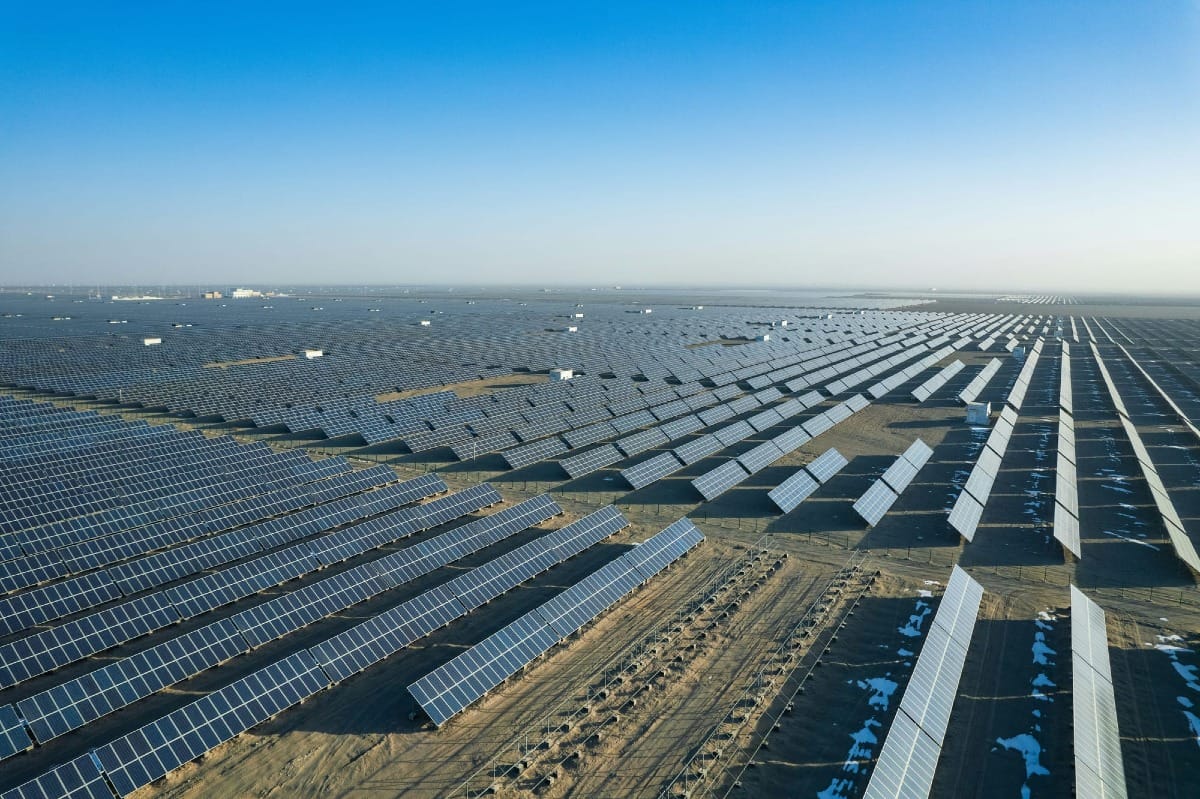The (Rest of the) World is Leaving Fossil Fuels Behind
For the first time, renewable energy generated more electricity globally than coal. We're not going back.

Welcome to my relaunched newsletter, with independent writing and reporting on science, politics, and policy. Read more about it here, and please subscribe at the bottom of this post to support this work.
According to a report from the UK-based thinktank Ember, the world met a critically important and symbolically meaningful milestone over the first half of this year: for the first time, renewable energy generated more electricity globally than coal. We're not going back.
"We are seeing the first signs of a crucial turning point," said Małgorzata Wiatros-Motyka, a senior analyst for Emberg, in a statement. "Solar and wind are now growing fast enough to meet the world’s growing appetite for electricity."
Some numbers: renewable power generation grew by almost eight percent in the first half of the year, to a total of 5,072 terawatt-hours. Coal generation, meanwhile, fell by 31 TWh to 4,896 in total. And so, their global shares of the total generation flipped, with renewables accounting for 34.3 percent and coal making up 33.1 percent.
This is basically a convenient marker of solar and wind power's — solar in particular — stunning growth in recent years. Just a year ago, solar represented 6.9 percent of the global electricity mix; the first half of this year, that number was 8.8 percent. If you look back at historical data it gets more absurd: in 2005, say, just 20 years ago, coal power generated almost 40 percent of the total electricity supply, or more than 7,000 TWh for the full year, while solar power accounted for, uh, 3.94 TWh. Three-point-nine-four. Total. Solar power's growth in the first half of 2025 topped ouat t 306 TWh.
As with most global energy trends these days, the primary reason for this is simple: China. Of all the solar power growth Ember analyzed, the world's biggest greenhouse gas emitter accounted for 55 percent of it. China installed 212 gigawatts of new solar power in the first half of this year alone, not that far off from the entire US solar capacity. Though it and India are still building coal plants, there are obvious signs of a shift here; these countries can understand basic math and see that even aside from the climate benefits, pivoting to an electrified, renewable-powered society is an economic no-brainer.
Speaking of which. On the energy front, Republicans used to at least play-act the concept of shame. For many years, most would tout the idea of an "all-of-the-above" strategy, a defensible-sounding premise that in a country with wide-ranging and growing energy strategy it would be prudent to maintain a "level playing field" and let people build and use the sources that make the most sense for a given place or purpose. This was, of course, a thinly veiled rhetorical gimmick aimed at maintaining the centuries-old thumb pressed on the coal, oil, and gas side of the scale, but at least it made some effort; these days, the Trump administration's motto might as well be "Mask Off."
Now it's just a full-on war on renewable energy, with wind power in the primary sights thanks to the Big Guy's decades-long fixations but with no lack of enmity for the sun shining on a solar panel either. Secretary of Energy Chris Wright now routinely appears on various regime (Fox News) TV shows to call solar and wind power "parasitic sources," lie about electricity prices, and call the global investment in renewable sources a "complete trainwreck." He takes tours of Europe to mock countries' attempts to decarbonize.
And meanwhile, as Trump and Wright force coal plants to stay open past planned retirement dates for no reason beyond spite and murderous zest, the rest of the world has helped the good energy leapfrog the worst of it.
"This analysis confirms what we are witnessing on the ground: solar and wind are no longer marginal technologies—they are driving the global power system forward," said Sonia Dunlop, the CEO of the Global Solar Council, according to Ember's release.
The rest of the world isn't moving fast enough when it comes to climate targets, but it is, in fact, moving.




